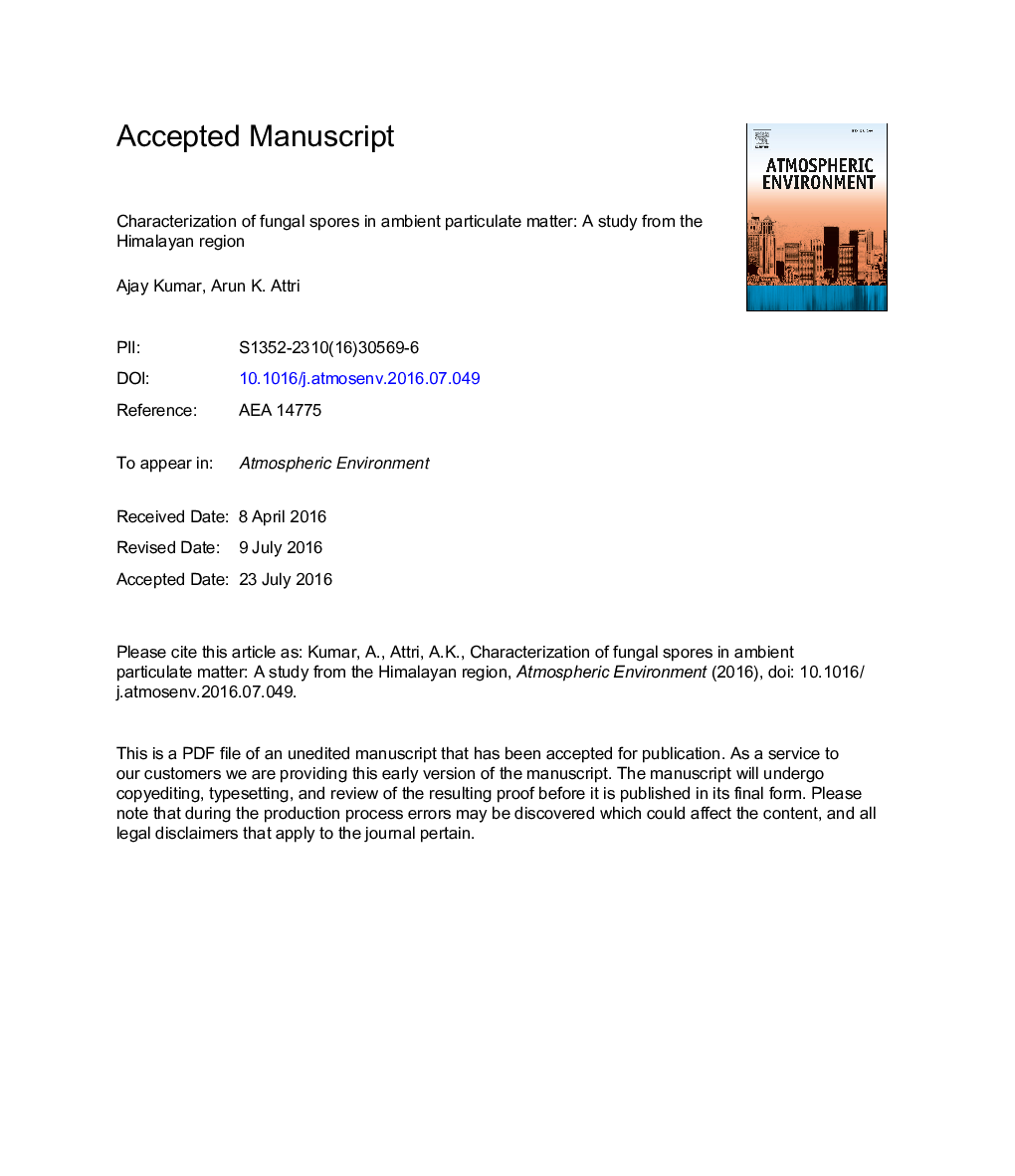| Article ID | Journal | Published Year | Pages | File Type |
|---|---|---|---|---|
| 6335806 | Atmospheric Environment | 2016 | 32 Pages |
Abstract
Fungal spores as a constituent of ambient particulate matter (PM) is of concern; they not only display the physical traits of a particle, but are also potential allergens and health risk. An investigation over fourteen month was undertaken at a rural site located in the Western Himalayan region, to evaluate the PM associated fungal spores' concentration and diversity. The season-wise change in the fungal spores concentration in the Coarse Particulate Matter (CPM) fraction (aerodynamic diameter > 10 μm) varied from 500 to 3899 spores mâ3. Their average concentration over 14 months was 1517 spores mâ3. Significant diversity of fungal spores in the CPM samples was observed; 27 individual genera of fungal spores were identified, of which many were known allergens. Presence of Ascomycota and Basidiomycota fungal spores was dominant in the samples; â¼20% of the spores were un-characterized. The season-wise variability in fungal spores showed a statistically significant high correlation with CPM load. Maximum number concentration of the spores in CPM was recorded in the summer, while minimum in the winter. The high diversity of spores occurred during monsoon and post monsoon months. The meteorological factors played an important role in the fungal spores' distribution profile. The temporal profile of the spores showed significant correlation with the ambient temperature (T), relative humidity (RH), wind speed (WS) and planetary boundary layer (PBL) height. Strong correlation of WS with fungal spores and CPM, and wind back trajectories suggest that re-suspension and wind assisted transport of PM contributes to ambient CPM associated fungal spores.
Related Topics
Physical Sciences and Engineering
Earth and Planetary Sciences
Atmospheric Science
Authors
Ajay Kumar, Arun K. Attri,
